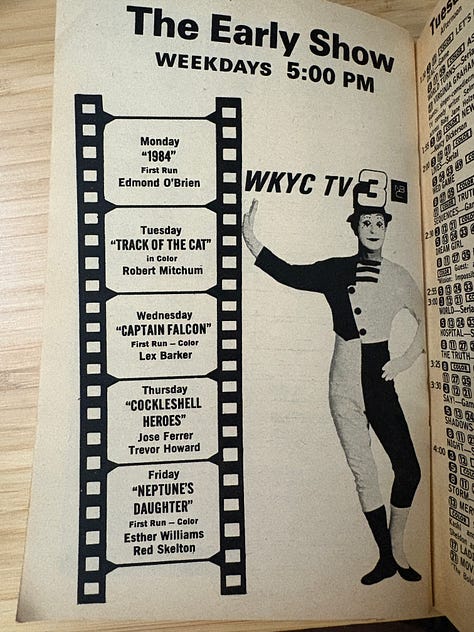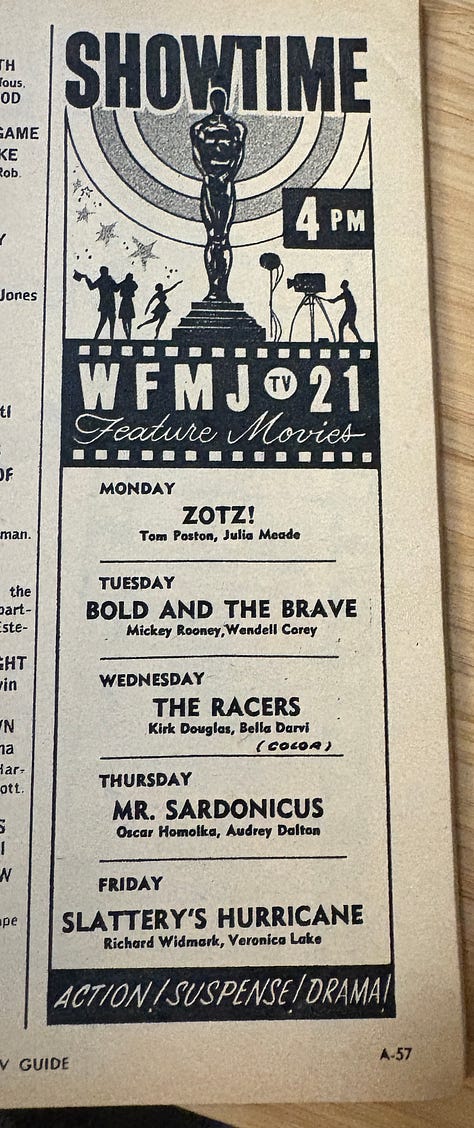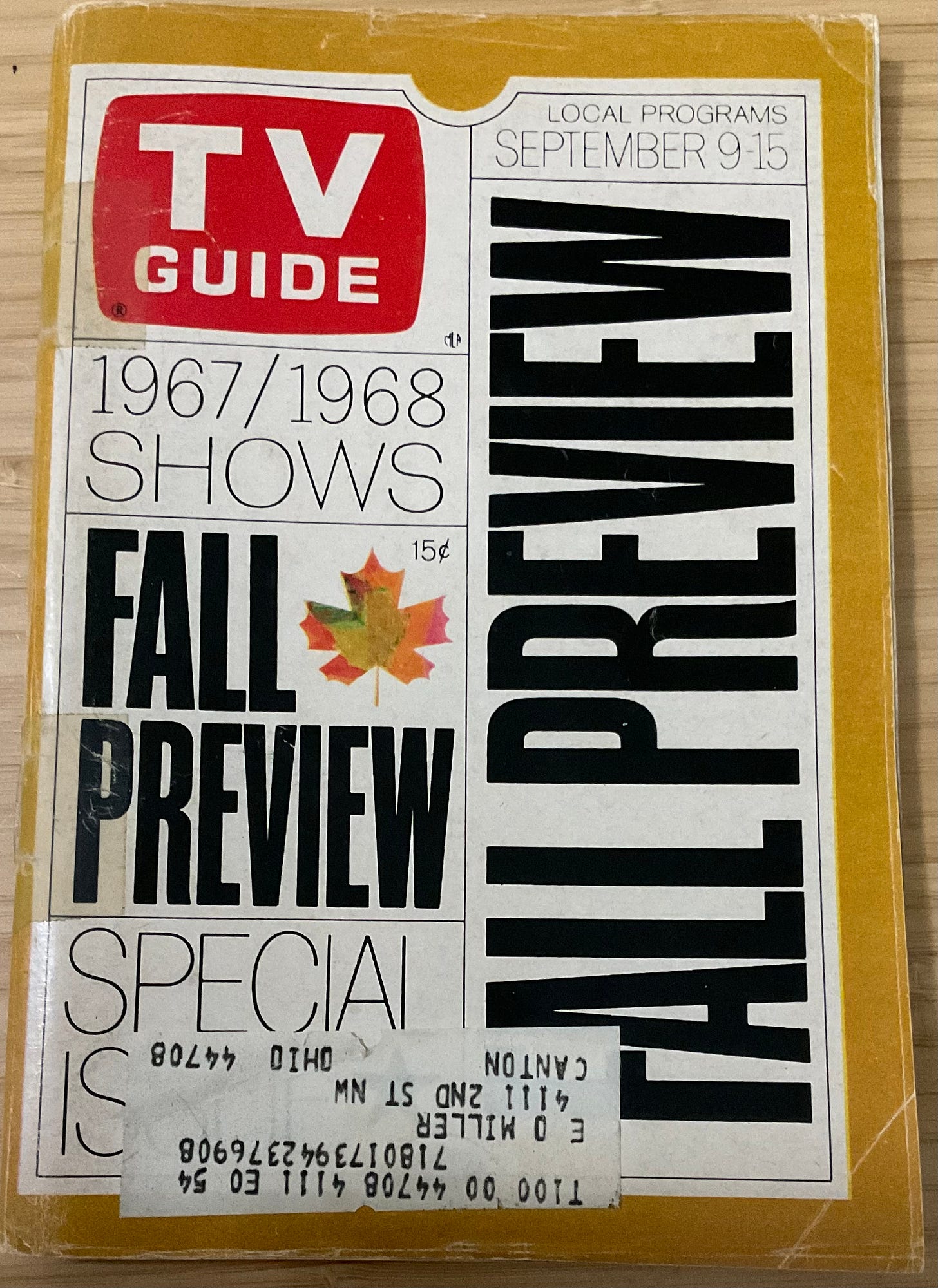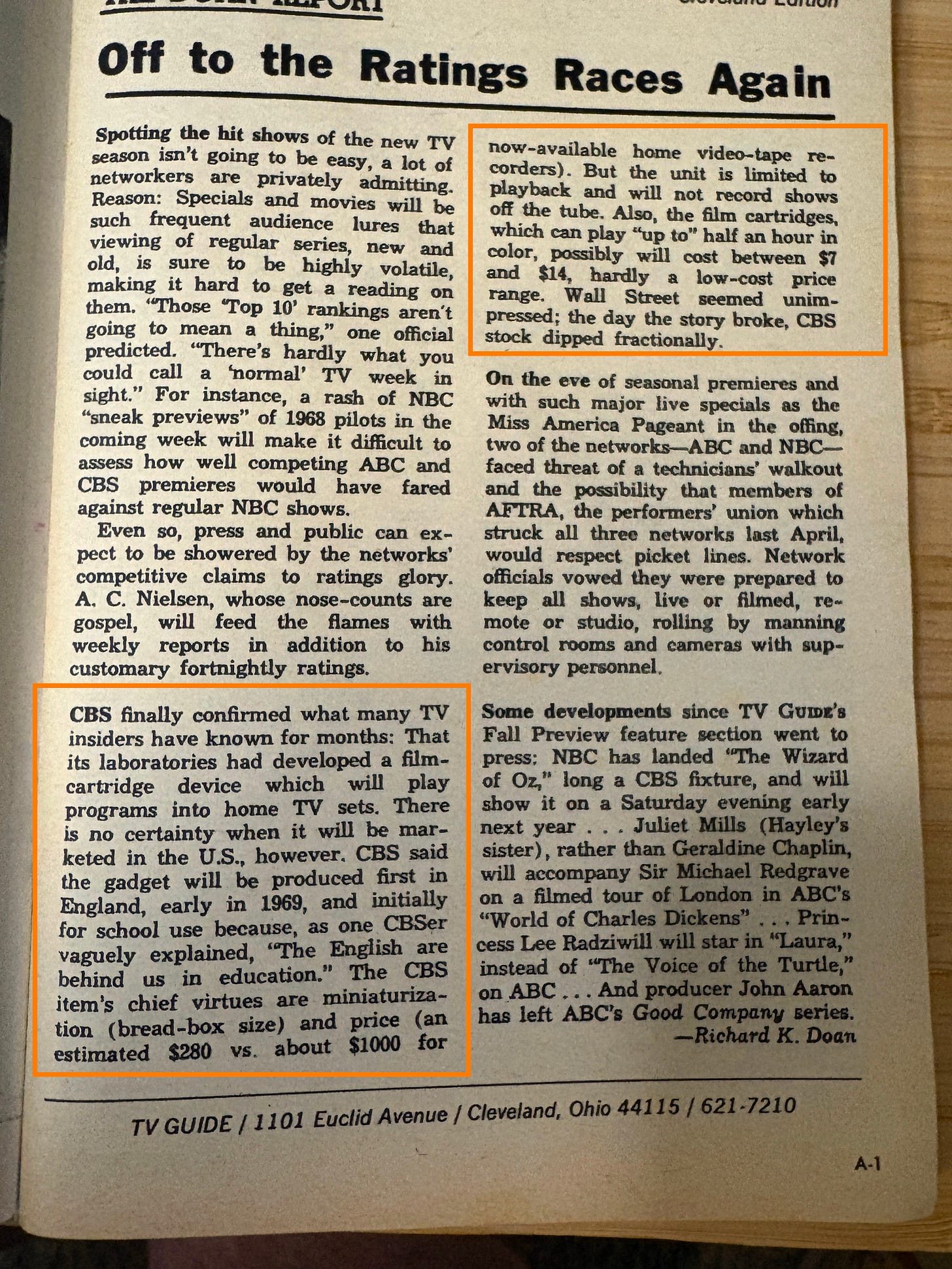"Previously On..."
A recurring look at recent TV I've watched, notable industry news, items from my archive & their significance, and the history of TV programming as told through the pages of TV Guide.
My Mom Jayne (HBO / HBO Max): Mariska Hargitay’s loving tribute to her mother Jayne Mansfield is one of the best documentaries I’ve seen in a long time. It has multiple entertaining and engaging elements wrapped into one 90-minute package: mid-century Hollywood, stardom & tragedy, family secrets, mysteries solved and even a big reveal. My loyal SVU viewership - I have seen every episode since S1 as it aired on NBC which is half my life - has likely enhanced my emotional connection to her as it did feel like a “friend” was discovering her heritage.
Resident Alien (Syfy): The science fiction comedy, now in its 4th season on Syfy, is a throwback because it is a scripted series on basic cable. It is also still laugh out loud funny. While the actual plots have become a little hard to follow, and the cute kids are now teenagers which is not as cute, Alan Tudyk and the rest of the cast have great chemistry and deliver the clever dialogue with the right mix of sincerity and whimsy.
Amy Bradley Is Missing (Netflix): A fascinating and still unsolved cased of a young woman who disappeared from a cruise ship in 1998 while staying in a cabin with her family. There are three episodes and while I did not intend to binge them during my first watch I couldn’t way to see what happens next so I completed it all in one night. The most compelling feature is that after finishing it, I still have no gut feel as to what happened to her.
Ballard (Amazon): I thoroughly enjoyed this 10-episode procedural police drama from the Bosch universe starring Maggie Q. While a few of the twists and turns were a little silly, and some of the personal relationship B stories were dull, the overall mystery and suspense of whodunnit was quite good. This actually inspired me to go watch Bosch for the first time and I am now on S3 although I abandoned S1 in the middle once an escaped convict became a central storyline. I find escape convicts incredibly hackneyed.
Late Show To End: I’ll let others handle the political speculations of this story. As someone who has been immersed in P&L analyses of Late Night TV for years, it is not surprising that one of the big three shows was cancelled outright. I would not have guessed the timing perhaps but it was inevitable. Also, I somewhat predicted this would happen back on June 2. Click here and scroll down to the write-up about 12:30.
Obama / Larry David: I am a little confused about exactly what this new HBO half-hour comedy will be, which I think is intentional, but i am looking forward to it! Although it seemed like Larry David could not match Seinfeld after it ended, he essentially did so with Curb Your Enthusiasm and I would bet a hat trick is likely.
IP Watch #1: Scrubs Returns on ABC: The 90s-00s sitcom revival track record is mixed. There are failures like Murphy Brown and successes like Roseanne / The Conners. Scrubs has all the necessary features to give it a good chance: 1) A cast that is still relatively youthful and popular 2) and interested in returning to the show 3) a series that was not so topical in its original run as to feel out of date now, 4) original showrunner / creative voice returning, 5) 15 years old - the sweet spot for a show to not feel as if it is returning too soon but also not so long ago that no one cares.
IP Watch #2: Stuart Fails To Save The Universe on HBO Max: Warner will smartly continue to extend the Big Bang Theory franchise with a fourth series following the mothership, Young Sheldon and Georgie & Mandy. The twist here is that this is the first BBT series to not air on CBS as it will be a streaming original for HBO Max.
Stick: I will pat myself on the back and point out that I predicted here the S2 renewal that was just announced based on the Luminate performance data (scroll to Stick section).
Lee Majors’ Contract For The Six Million Dollar Man Pilot: Presented here is a three-page amended contract from Universal signed by Lee Majors on 12/19/72 to “appear in a starring role in our 90-minute television motion picture now entitled ‘Cyborg’”. Cyborg was the name of the book by Martin Caidin that the series was based on. That movie was eventually retitled to the series name we now know which aired just four months later, on 3/7/73. The notable points from the contracts are:
Majors’ original Universal deal started 3/10/70, right after his prior series, The Big Valley, ended.
A $1000 per week salary on top of his contractual pay from Universal.
If the movie becomes a series the contract extends by a year and Universal can chose to do this until 4/5/1977.
For each episode of the series in year one Majors gets $10,500 per one-hour episode and $13,000 per 90-minute episode. This is $73K and $90K in 2025 dollars - a remarkable bargain for a hit series lead by today’s standards. In year two the salary in 1970s dollars goes up to $11K / $13.5K.
Majors is also entitled to 5 percent of the net profit from merchandising that uses his name / likeness.
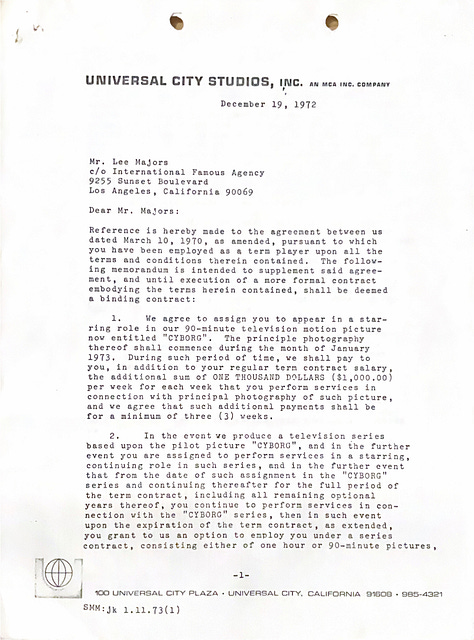
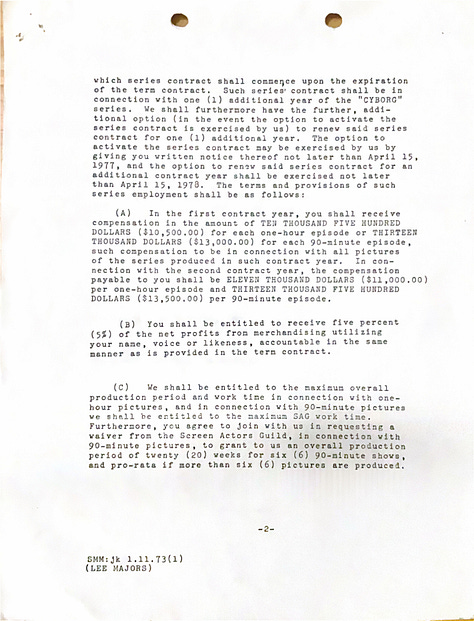
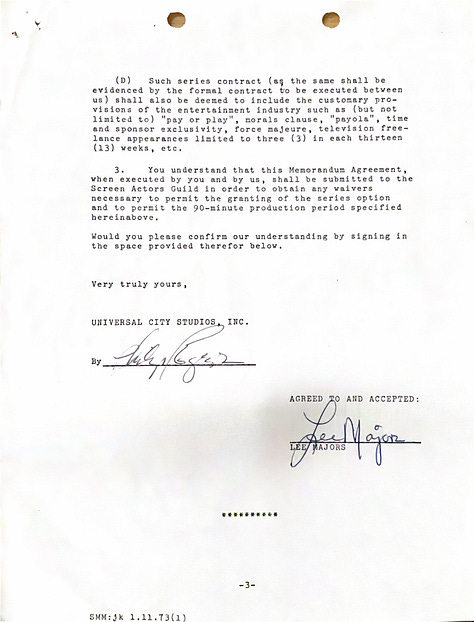
What I’ve learned from the 1967/68 Fall Preview TV Guide is that it was not a particularly notable season for new shows. Only three new series made a mark. There was also The Flying Nun starring Sally Field which is remembered more for its novelty than its longevity or quality - it lasted three seasons.
The three shows that started that year which became long-running popular series are Mannix (1967-1975) which is one of my favorite shows of all time; Ironside (also 1967-1975), and The Carol Burnett Show (1967-1968). These days Mannix and Ironside are available on streaming and/or digi-nets and are considered solid, meat-and-potatoes crime dramas of the era. However Carol Burnett’s variety show is beloved and numerous of today’s most popular comediennes were inspired by it.
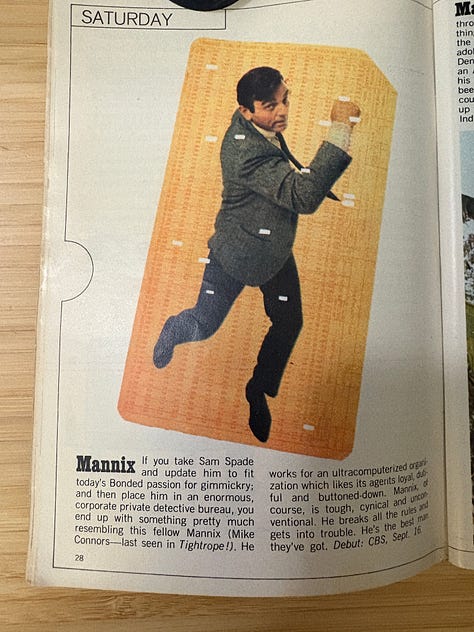
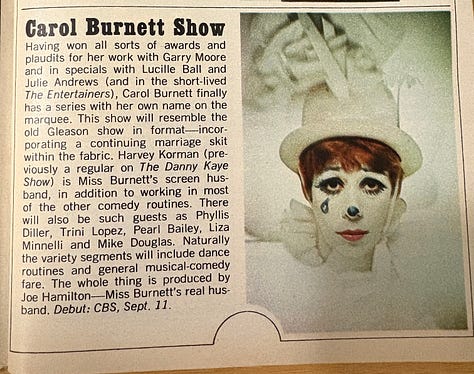
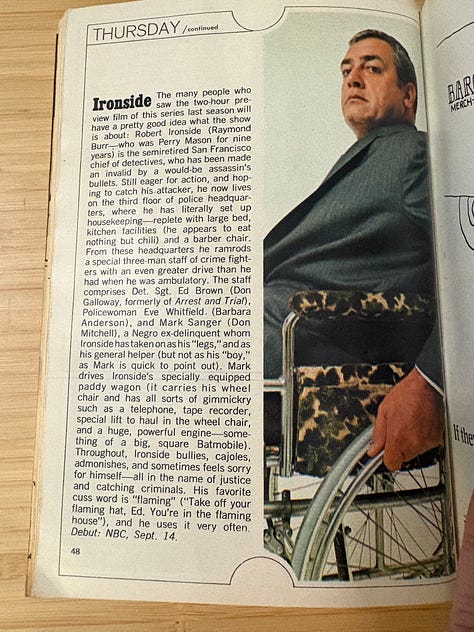
The scoop column of the era, The Doan Report (think of it as Puck in 1967), is most interesting for the second item. It is very early foreshadowing of the coming era of the VCR / Betamax about 15 years before they became mainstream.
These three ads document the fact that for most of TV’s life (the streaming era is a very small portion) movie slots were very important and lucrative parts of a local station schedule. This edition is from Cleveland.

